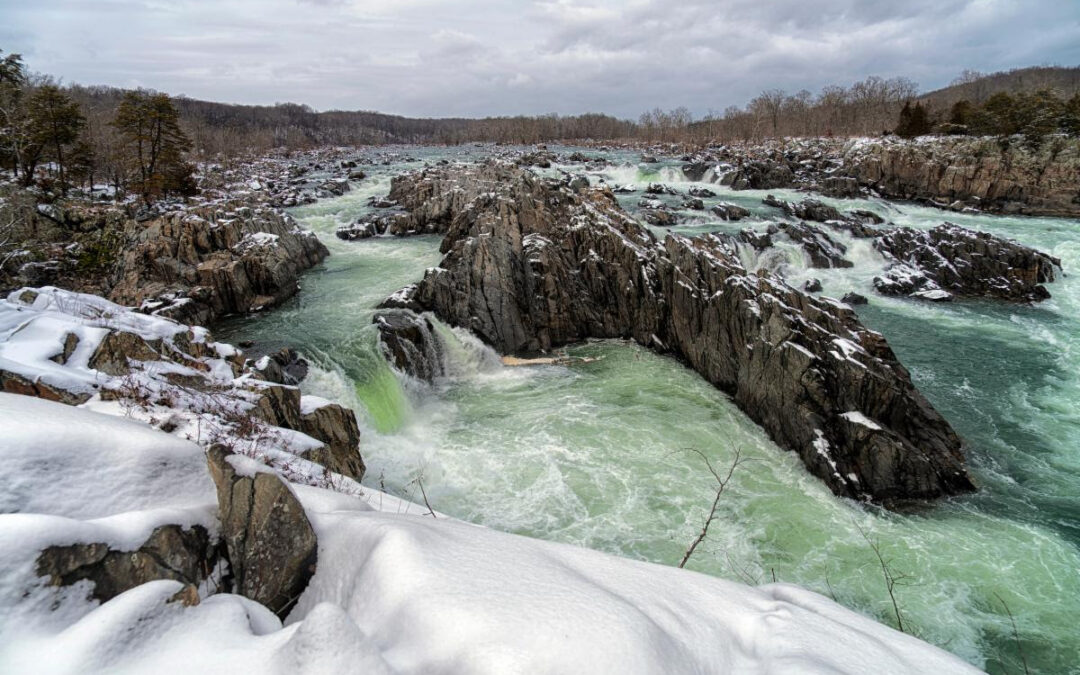Great Falls Park (Photo Credit: Kevin Ambrose, Washington Post)
Throughout the Chesapeake Bay watershed there are plenty of outdoor spaces and public access sites to be thankful for – this holiday season Chesapeake Bay Program asked a handful of their staff to share outdoor spaces that mean the most to them:
Calvert Cliffs
Briana Yancy, Diversity Workgroup Coordinator:
One of my favorite places is Calvert Cliffs. I love [it] because the trail down the beach is filled with different habitats and the beach itself transports you back in time.
Difficult Run
Garrett Stewart, Management Board, Principals’ Staff Committee and Executive Council Staffer:
A place I’m thankful for is Difficult Run, a 16-mile tributary that flows from its headwaters in central Fairfax County to where it meets the Potomac River below Great Falls in Mather’s Gorge. The stream runs laconically for the majority of its course but crescendos to a dramatic finale in its last mile as it tumbles into the Potomac. The park surrounding Difficult Run hosts many iconic species including the great blue heron and bald eagle, (and until the 1990s, the brook trout). Its oxbows and pools provide quality fishing and swimming holes, and Mather’s Gorge provides an exciting challenge for paddlers willing to test themselves on Class V rapids. Difficult Run is an oasis in a landscape increasingly defined by asphalt and concrete; I am thankful for its continued preservation and am hopeful that one day it will be restored to a condition I’ve never seen.
Washington, D.C., Greenspace
Emily Heller, Environmental Protection Specialist:
I’m thankful for basically any place in Washington, D.C., with greenspace and access to water. Living in the city with asthma, I’ve never realized how much I appreciate being able to take a deep breath without the congestion and air pollution that inevitably comes in any city. Some of my favorite spots include: Rock Creek Park, Franklin Park, George Washington Memorial Parkway…
To read the full list of getaways from staff, visit Chesapeake Bay Program’s blog post.
The Public Access Goal of the Chesapeake Bay Watershed Agreement sets the intention to “expand public access to the Bay and its tributaries through existing and new local, state and federal parks, refuges, reserves, trails and partner sites.” Partners working across the watershed are also committed to striving to assure that access is equitable throughout all communities. Physical access to the Chesapeake Bay and its tributaries as well as to green spaces in various settings carries with it real consequences for quality of life and human health, local economies and long-term conservation. Increasing public access for recreational, educational and other activities fosters a shared sense of responsibility and increased stewardship that supports watershed restoration and conservation goals.
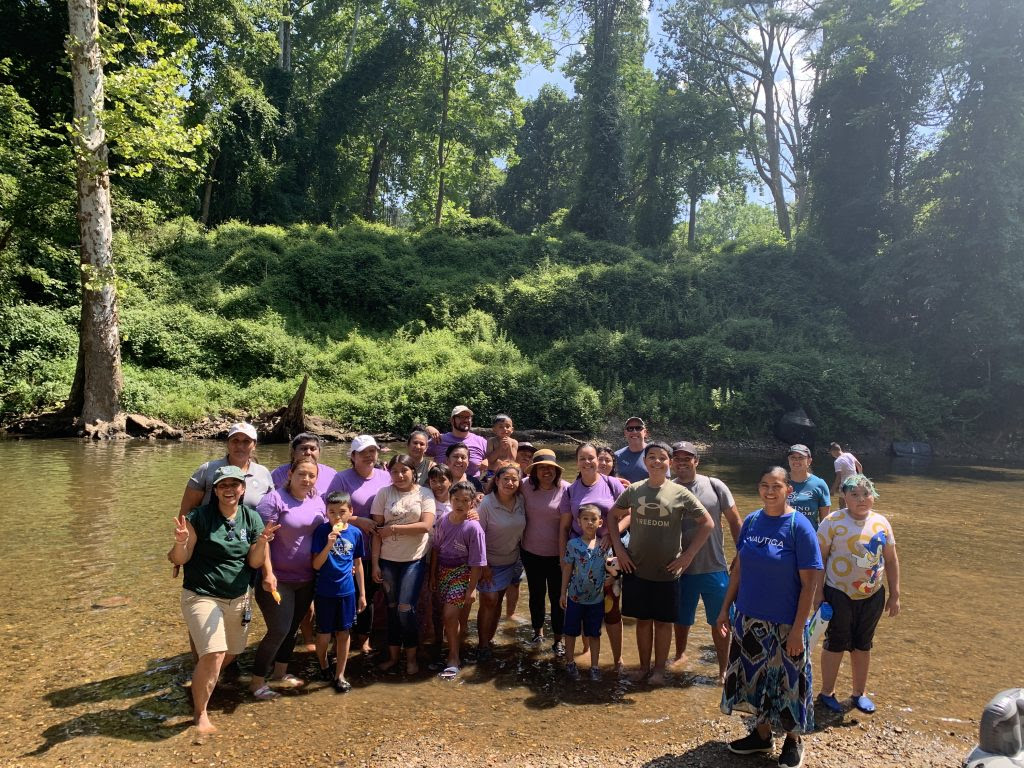
Defensores de la Cuenca (Photo Credit: Defensores de la Cuenca)
Building Connections to the Outdoors with Defensores de la Cuenca
Defensores de la Cuenca, meaning watershed defenders, is a non-profit dedicated to helping the Latino community connect with the natural world through knowledge, shared experiences, and opportunities to preserve and defend the Chesapeake Bay watershed for a healthier mind, body, and soul.
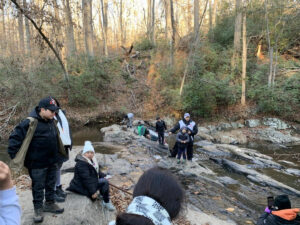 Defensores de la Cuenca takes a step ladder approach in their engagements by supporting families in creating family friendly events that are welcoming and inviting to ensure Latino participants have fun and make positive connections to nature – always cognizant of the barriers that keep many from the Latino community from participating.
Defensores de la Cuenca takes a step ladder approach in their engagements by supporting families in creating family friendly events that are welcoming and inviting to ensure Latino participants have fun and make positive connections to nature – always cognizant of the barriers that keep many from the Latino community from participating.
This Holiday season, Defensores de la Cuenca led one of their family friendly events at Prince William Forest Park, a natural refuge a short distance from Washington, DC. The event was supported by the National Park Service Chesapeake Office, Prince William Forest Park Office, EDF and other partners. Invitations were extended to the local Latino community and La Academia de Defensores participants, a paid Spanish language training opportunity for adults. A total of 72 people participated in the event, coming from local communities from Richmond, Fredericksburg, Fairfax and Stafford County in Virginia, Washington, DC; and in Maryland Prince George’s and Montgomery Counties, and Baltimore City.
With the goal of creating a positive experience for families, Defensores de la Cuenca started their first night with introductions and a campfire at the park pavilion gearing up for the fun-filled day ahead. The next morning participants set forth on a scavenger hunt aimed at familiarizing them with the opportunities for recreation and resources at Prince William Forest. The day also included breakout groups for activities such as a guided hike, yoga, and an educational discussion on local species. Guests also participated in a game called Backyard Bass, teaching participants how to cast a fishing line for their first time.
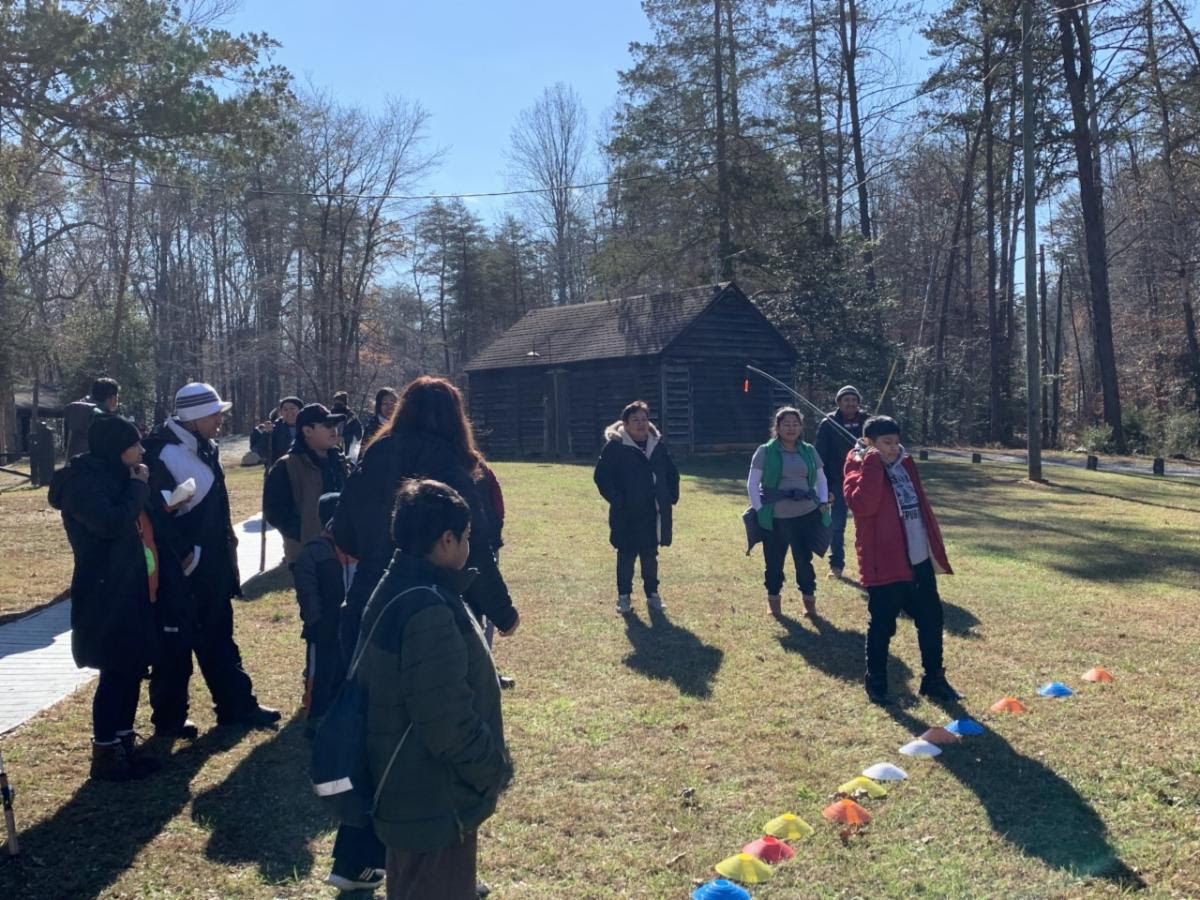
Backyard Bass (Photo Credit: Defensores de la Cuenca)
The night ended with s’mores and reflections on participants’ connection with nature, public access and the outdoors through the camping experience. Defensores de la Cuenca staff also led a discussion centered on the watershed and how vital it is to communities, people, health and water quality, and how users should care for and preserve its resources.
Campers enjoyed and appreciated the experience. One reaction:
“Fue una muy bonita experiencia. Es mi primera vez pero me encanto. Muchísimo gracias por este evento, muy bonito, muy bien organizado. Muy agradable y agradecida. Dios los bendiga.” – Nazaria
Translation:
“It was a very nice experience. It was my first time and I loved it. Thank you very much for this event, it was very nice and well organized. I’m very grateful and God bless you.” -Nazaria
Experiences such as these are sometimes first experiences for the Latino community. Defensores De La Cuenca seeks to provide these opportunities and aim to remove barriers by providing resources such as transportation, access, lodging, meals and support.
Public access sites are places anyone can visit. If you fish, boat, swim, or just want to enjoy nature around the Bay or one of its tributaries visit the Chesapeake Bay Program’s map which includes sites across the Chesapeake Bay watershed to access or view waterways. Many more parks and green spaces are available throughout the region as well – Find Your Chesapeake offers one means to find a spot near you to enjoy any time of year. And we encourage sharing the ways to locate public access points with everyone and anyone to help them to enjoy the outdoors more. Make it a family event and get outside for the holidays!
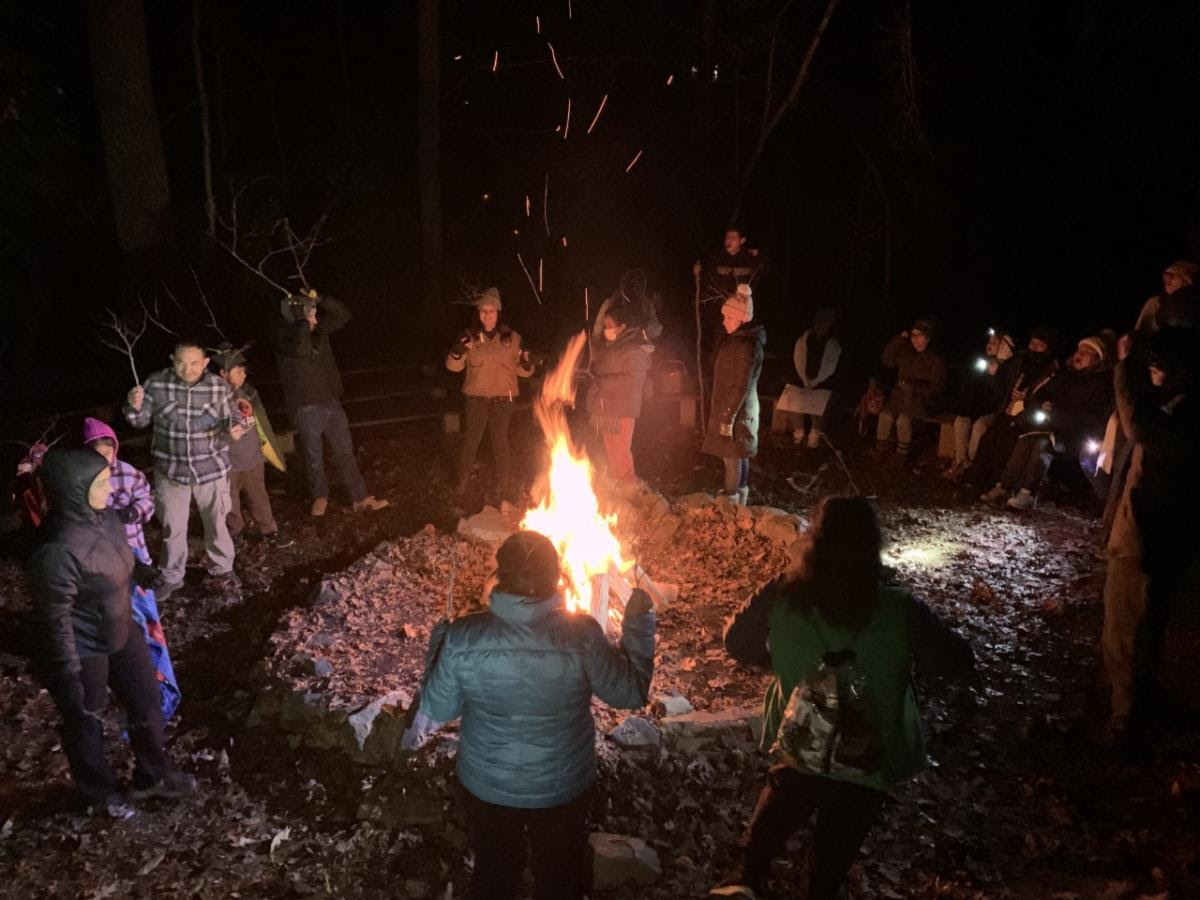
Campfire (Photo Credit: Defensores de la Cuenca)
Image credit:
- Prince William Forest, Photo Credit: Defensores de la Cuenca
Lightning Update is a regular communication of the Chesapeake Conservation Partnership. Any opinions expressed are those of the authors and do not necessarily reflect positions of the Partnership or member organizations.
To share a success story, news, or important event, send your information to:
Support for the Chesapeake Conservation Partnership is provided by:
National Park Service Chesapeake
EPA Chesapeake Bay Program
USDA Forest Service
Pennsylvania Department of Conservation & Natural Resources
Maryland Department of Natural Resources
Virginia Outdoors Foundation
US Fish & Wildlife Service
Chesapeake Conservancy
The Chesapeake Conservation Partnership is co-convened by:




